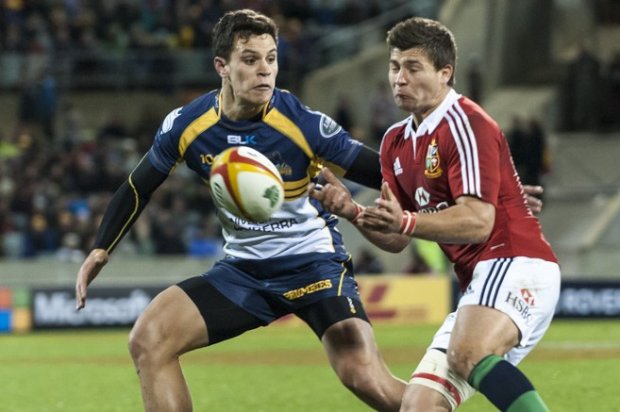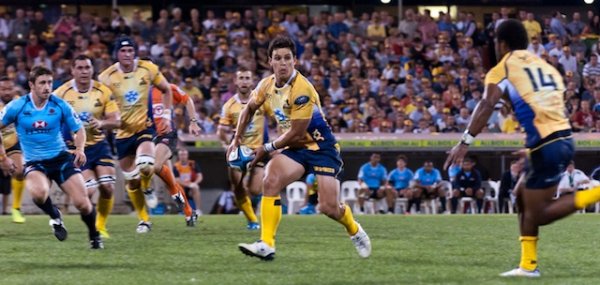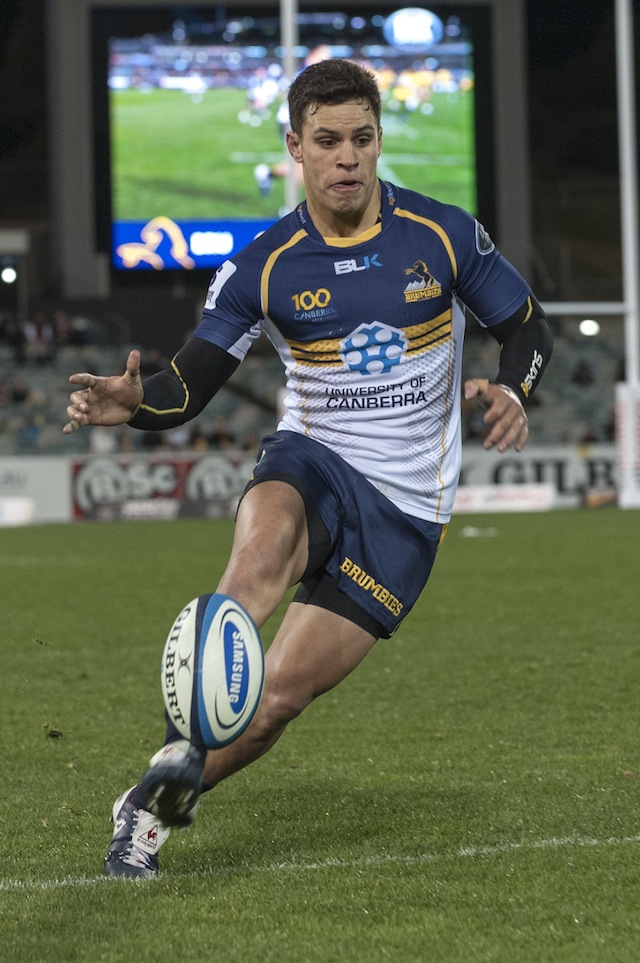It is easy to forget that in the late 1990s, Australia struggled to get any depth at 10. Pat Howard was tried there. So was Rod Kafer. Even Tim Horan got a go – a square peg for a round hole if ever there was one. Eventually Stephen Larkham established himself there and selectors prayed his fragile frame would not succumb to injury.
Fastforward to 2013. The Wallabies have chosen a Rugby Championship squad featuring three options at 10. in Bernard Foley, Quade Cooper, and Matt Toomua, and all offer something different. Even more astonishing is that just a few weeks ago the Australian squad for the Lions series also contained three fly halves – Kurtley Beale, James O’Connor, and Berrick Barnes – and there is no overlap between the two groups.
In short, there is a sudden glut of fly halves in Australia. Those at the much maligned Australian rugby Union who long sought extra Super Rugby teams in Perth and Melbourne – amid much and sometimes ongoing derision – should be congratulated.
But of the current crop, what do each offer and what shortcomings do they bring with them? What does each bring to the Wallabies equation? This article is the first of a three-part series on the 10 jersey and focuses on the current man of the moment: the Brumbies’ Matt Toomua.
Toomua offers the understated option. In contrast to the Reds and the Waratahs, the Brumbies (like the Deans Wallabies) typically operate their forward hit-ups off 9, not 10. This means that Toomua plays a less overt role in the play-to-play attack of the team (in stark contrast to Bernard Foley, for instance). A common misperception is that the Brumbies have utilised Christian Lealiifano as a second playmaker to diversify the play-making responsibilities. While Lealiifano can perform such duties (and did so quite well at 10 for the Brumbies last year) in fact most of these have been delegated this season to Nic White. The bottom line is that Toomua simply touches the ball less often than Foley or Cooper and thus has a less obvious impact on the game (positive or negative).
What Toomua does do is receive the ball flat, at pace, and aim to put runners in holes. He essentially plays rugby the way that playmakers do in good touch rugby teams in competitive comps on Monday nights. He looks for gaps and overlaps. He seeks to put the ball on the chest of the person in the right position at the right time. Nothing flashy, just effective. Less is more. See it in this accompanying video
He has also developed an offloading capability in contact. This skill remains a work in progess. But unlike Cooper’s offloads, because Toomua is offloading while dominating the contact (or at least not being pummelled backwards), the result of successful offloads are line-breaks or half-breaks, not simply a pass to a static player behind the gain line. The statistics record Cooper as having a whopping 47 offloads this year, but the lack of a commensurate lead in the “linebreaks created” stat says a great deal about the effect of these.
Toomua offers two additional “points of difference”, in the lingo of the day. The first is his kicking game. Using a low, roundhouse style of kicking not dissimilar from Lealiifano’s, Toomua has both the distance and accuracy to keep teams pinned back.
The second is his defence. The statistics below are very revealing of the defensive capabilities of the three players under the spotlight here. More on this later. But what the statistics do not show is, again, the qualitative nature of Toomua’s tackling. Put simply, despite his slender frame Toomua can smash a bloke, and has proved so numerous times this year. Other than Nick Cummins, no-one in the Wallaby backline hits big as successfully and regularly as Matt Toomua.
The real issue, as with the other fly halves, is how Toomua might fit into a Wallaby team. Or, to put it another way, what tactical and personnel combinations might need to be in place to ensure Toomua’s strengths are utilised and his shortcomings mitigated.
Certainly, Toomua does not have anything approaching the X factor of Quade Cooper, or even Kurtley Beale. His range of passing is more limited too (though the Brumbies’ game plan may not have allowed him to show off his wares on this front). Against strong defences, or with a struggling pack, Toomua might not be able to unlock international-level defences. The Wallabies might need another creative player in the line-up to help compensate.
That aside, the great thing about Toomua is the lack of major shortcomings. Toomua is the steady hand on the wheel; you know what you are going to get. He isn’t going to derail the team with late-night antics. He isn’t going to have a shocker and corrode the entire team’s performance, because he is not as central to the way the team plays in toto. He is going to be part of the team, not apart from it.
Even in the short-term, if McKenzie is primarily concerned with sorting out other elements of his team structure – the ongoing question mark over the ball running 8, the defensive patterns, how to best use Israel Folau and James O’Connor, team discipline, the scrum – Toomua might help him put the 10 issue to one side.




